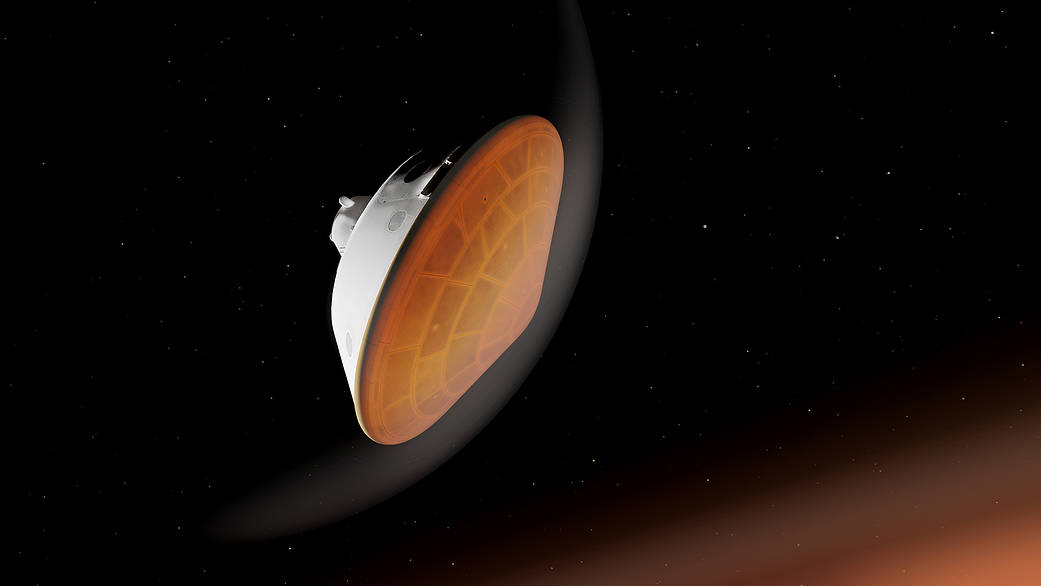With its heat shield facing the planet, NASA’s Perseverance rover begins its descent through the Martian atmosphere in this illustration. Hundreds of critical events must execute perfectly and exactly on time for the rover to land on Mars safely on Feb. 18, 2021.
Entry, Descent, and Landing, or “EDL,” begins when the spacecraft reaches the top of the Martian atmosphere, travelling nearly 12,500 mph (20,000 kph).
The aeroshell, which encloses the rover and descent stage, makes the trip to the surface on its own. The vehicle fires small thrusters on the backshell to reorient itself and make sure the heat shield is facing forward as it plunges into the atmosphere.
NASA’s Jet Propulsion Laboratory in Southern California built and will manage operations of the Mars 2020 Perseverance rover for NASA.
For more information about the mission, go to: https://mars.nasa.gov/mars2020.
Credit: NASA/JPL-Caltech
在此插图中,NASA的毅力号探测器的隔热罩面向火星,开始在火星大气层中下降。数百个关键事件必须完美、准确地按时执行,才能让探测器于2021年2月18日安全降落在火星上。
当飞船到达火星大气层的顶部,以每小时12500英里(20000公里)的速度飞行时,开始进入、下降和着陆,或“EDL”。
位于南加州的美国宇航局喷气推进实验室为美国宇航局建造并将管理NASA的火星2020毅力号探测器的运行。
有关此次任务的更多信息,请访问:https://mars.nasa.gov/mars2020。
影像来源:NASA/JPL-Caltech







